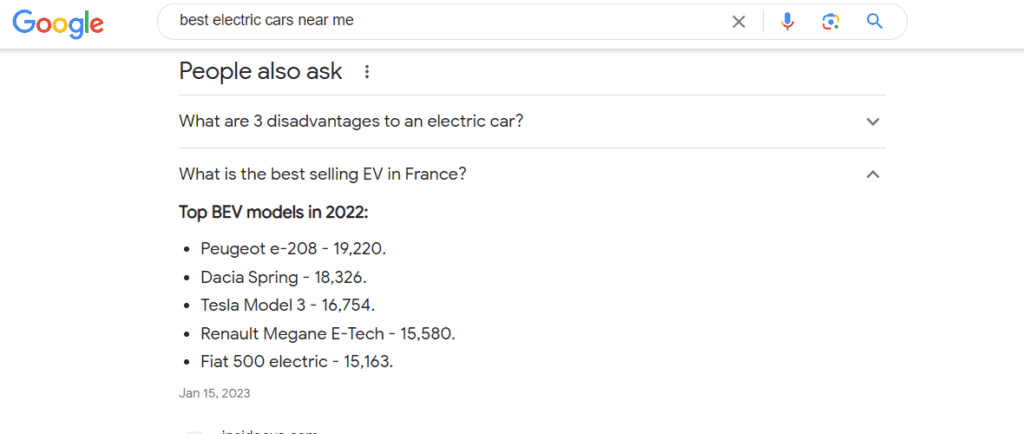Welcome to the exciting world of voice search! From smart speakers to virtual assistants, it’s changing the game in how we interact with technology. Get ready to discover the amazing benefits of this transformative technology for individuals and businesses alike. We’ll explore how it works, the perks like hands-free convenience and enhanced productivity, and practical strategies for businesses to stay ahead. Plus, we’ll take a sneak peek into the future of voice search. Don’t miss out on this thrilling journey into the world of voice search! Let’s dive in and unleash its full potential!
What is voice search?
The rise of voice assistants
In a world where technology seems to advance at the speed of a supercar, voice search has emerged as a game-changer. With the rise of voice assistants like Siri, Alexa, and Google Assistant, people can now interact with their devices using natural language.
How does voice search work?
When you ask a question or give a command to a voice assistant, it converts your spoken words into text and then searches the internet for the most relevant information. This hands-free experience allows you to multitask, keep your eyes on the road, or even keep your hands on the steering wheel while you get the answers you need.
The combination of voice search with AI, such as ChatGPT, offers a transformational experience that allows consumers to interact with technology in natural, conversational ways. AI-powered voice assistants analyze and interpret user questions, providing relevant and tailored results. AI models such as ChatGPT can improve voice search by delivering intelligent responses to follow-up inquiries, gradually boosting understanding and accuracy. This integration enables voice-based e-commerce, personalized recommendations, and smart device control. Overall, the combination of voice search with artificial intelligence (AI) transforms how we engage with technology, making it more convenient, efficient, and intuitive.
Why Voice Search matters
Convenience at your command
Picture yourself cruising down the open road, wind in your hair, and a sudden craving for pizza strikes. Instead of fumbling with your phone and typing in “pizza near me,” you can simply ask your voice assistant to find the best pizza joints along your route. It’s the ultimate convenience, freeing up your hands and keeping your focus on the road ahead.
(According to PWC research, 71% of Americans would prefer to use voice search than input a query on a keyboard.)
The Voice Search Revolution
Voice search is not just a passing fad; it’s a full-throttle revolution. Statistics show that the use of voice search is on the rise, with predictions that half of all searches will be voice-based by 2025. This rapid growth is further supported by predictions from Statista, which projects the number of voice-enabled digital assistants in use worldwide to reach 8.4 billion by 2024. These staggering numbers highlight the profound impact that voice search will have on how people interact with technology and search for information in the coming years.
Ignoring this trend could mean missing out on a massive audience of potential customers eager to find their way to your business.
Improvements in natural language processing & machine learning
On top of that, natural language processing and machine learning advances have considerably improved the accuracy and reliability of speech recognition systems. As a result, people have increased trust in voice search technology, paving the way for its wider adoption. In 2021, Google’s voice recognition system attained 95% accuracy, reaching human-level capability. Over time, more and more languages will be eligible.
Smart speakers
The fast acceptance of smart speakers has opened up new avenues for businesses. According to Canalys research, worldwide smart speaker shipments will reach 150.9 million devices in 2020. These gadgets let users conduct voice-based searches, order things, and engage with numerous services, providing a new channel for reaching out to potential clients.
Voice Search SEO Optimization
Targeting long-tail keywords
When it comes to voice search, people tend to use more conversational and natural language. Long-tail keywords and phrases are the keys to success. Consider what questions people might ask about your business and integrate those queries into your content.
You are looking for a new pair of running shoes. Using text, you would probably search for something like “good running shoes”.
On the other hand, if you are looking through voice search for the same pair of shoes, it’s more likely that you are going to ask a question such as “What is a good pair of running shoes?”
The truth is that you can’t expect to gain a big share of voice search results by only optimizing your content towards short high search volume keywords. People are asking questions and you need to answer them.

It’s also true that it can be challenging to find ways to incorporate questions into your pages without disrupting the natural flow of your information.
Take the well-known company Airbnb, which is a leader in the travel and lodging sectors. Airbnb may improve their content for voice search by doing the following:
Identify long-tail keywords and phrases that are connected to travel, lodging, and particular locations. For instance, they may focus on terms like “best Airbnb experiences in Paris,” “book a cozy cabin in the mountains,” and “find vacation rentals nearby me.”
Conversational material: Produce educational and engaging material that addresses frequent queries from consumers regarding travel. Create location guides, travel advice, and articles that respond to questions like “What are the top-rated Airbnb listings in New York City?” and “What are the most affordable vacation rentals in Bali?”
How will you get around this?
FAQs will bring a lot of value to your pages and help you get started with voice search optimization.
Featured snippets
As an answer to a voice query, voice assistants frequently read out featured snippets. In fact, 60% of voice search results come from a featured snippet.
What are featured snippets? A featured snippet is a search result that has been chosen to display at the top of the search results page as the best answer to the query.
Google launched highlighted snippets to adapt their result pages to mobile and voice searches.

Your website’s chances of getting displayed as a voice search result can be increased by structuring your content to deliver short and well-structured replies. Create sections on your website that immediately respond to frequent voice search inquiries linked to your industry. Most top e-commerce players have FAQ section on their website.
Here is a screenshot of Zalando’s return policy page:

When you perform a voice search using Google Assistant asking these types of questions, you actually see these in the featured snippets results as you can see below:

Structured Data Markup
To enhance search engine understanding and increase the chances of your website appearing as a voice search result, it’s essential to implement structured data markup, such as Schema.org. While Schema.org is a widely used and comprehensive option, there are other forms of structured data markup available as well. Here are a few examples:
Product
There is “product” review markup that can be put to just about anything that can be reviewed. This type of star rating indicates the presence of structured data whenever it appears in a search result. These types of markup are frequently present in all top results, indicating that it can be challenging to rank for some results without them.
You can add this markup and have these snippets added to the result if you have anything on your site that can be reviewed. You may very easily rise to the top if your website appears in the SERPs as one of the only results having this information.
Offer
Incorporate structured data markup for offers to highlight pricing, discounts, and availability.
Event
If you host events, utilize event-specific structured data markup to provide essential details like dates, locations, and ticket information.
How-to
For instructional content, consider implementing structured data markup for how-to guides or tutorials to make them more accessible to voice searches.
Tools
Here are some tools and resources to help you deploy schema.org markup successfully:
WebCode.Tools: There is a structured data generator provided by this online tool, particularly for events, FAQ, how to, job posting & much more.. It can assist you in producing the required code for adding event-related schema.org markup.
WordPress Plugins: If you’re using WordPress, you may choose from a number of plugins that make using structured data markup simple. These plugins have easy-to-use interfaces and can create and add the necessary markup to your website automatically.
You can improve your website’s visibility in voice search results by adopting structured data markup and including pertinent schema.org types. Your ability to successfully utilize the power of structured data will be further aided by the use of visual examples and the provision of tools for implementation.
Mobile Optimization
Since most voice searches happen on mobile devices, ensuring your website is mobile-friendly is crucial. Optimize your site’s loading speed, use responsive design, and consider implementing Accelerated Mobile Pages (AMP) to deliver a seamless experience to users on the go.
Voice Search Advertising
Capturing Attention with Audio Ads
In the realm of voice search, audio ads are the new radio commercials. Take advantage of popular podcast platforms and voice assistant skills to reach your target audience. Craft engaging and informative ads that showcase the unique features of your business and invite listeners to learn more through voice search.
Burger King: In a clever and playful campaign, Burger King used voice search advertising to engage with potential customers. They aired a TV commercial that triggered voice assistants to read out the ingredients of a Whopper burger when the commercial said, “Okay Google, what is the Whopper burger?” This creative approach grabbed attention and sparked conversations around the brand, showcasing the potential of voice search advertising to generate buzz and engage audiences.
Starbucks: By including voice search on their mobile app, Starbucks has embraced voice search. Customers may place orders, personalize their drinks, and find nearby establishments using voice commands. This simplifies the ordering process and improves accessibility for clients who might struggle with typing or navigating the app. Starbucks’ use of voice search is an example of how businesses may use technology to offer a customized and effective consumer experience.
Optimizing for Local Searches
Location-based queries, such as “near me” searches, are typically included in voice searches.
Optimizing your company listings, which include your name, address, and phone number, will help you rank higher in local voice searches. Check that your company’s information is correct and consistent across all online directories and platforms.
Local and regional optimizations are extremely important for businesses that operate on a local scale. Over 50% of consumers use voice search to find local businesses.
You should look over the company’s Google and other local listings:
- Listings should always contain the company’s operation hours, brief descriptions, and photographs.
- Complete listings make it easy for searchers to contact or visit your business in person.
- Phrases like “near me” may be included in terms.
- Accounting for regional or area slang is a critical tip for an enterprise’s performance when optimizing for local.
The international fast food giant McDonald’s has effectively voice-search optimized its local listings. This is how they did it:
1) McDonald’s makes sure that its name, address, and phone number (NAP) information is accurate and consistent across a variety of online directories and platforms. When customers search for McDonald’s locations nearby, voice assistants can deliver accurate results thanks to this consistency.
2) McDonald’s has optimized and claimed its Google My Business (GMB) listing, which has been enhanced. Each location’s working hours, services offered (drive-thru, delivery, etc.), and top menu items have all been described in great detail. They demonstrate their dedication to customer satisfaction by actively managing customer reviews and responding in a timely manner.

3) McDonald’s uses location-specific keywords to make local listings and website content more in line with popular voice search inquiries. This includes inquiries like “McDonald’s near me,” “fast food restaurants in [city name],” or “where can I get a burger nearby.” McDonald’s boosts its likelihood of showing up in voice search results for nearby fast food options by using these pertinent phrases
4) Localized Promotions: Each location of McDonald’s uses its local listings to advertise certain sales, one-time specials, or new menu items. By adjusting promos in accordance with local trends and preferences, they increase interaction and draw in customers who use voice search to find nearby fast food restaurants..

Embracing Voice-Activated Chatbots
Imagine having a virtual salesperson available 24/7 to answer customer inquiries and guide them through the buying process.
A real-life example of a business implementing voice-based transactions is Domino’s Pizza. Domino’s developed an AI-powered voice assistant called “Dom,” which allows customers to place pizza orders using voice commands. Here’s how it works:

1) Voice-Activated Ordering: Customers can interact with Dom via Domino’s mobile app or voice-enabled devices like as Amazon Echo. They only need to say, “Hey Dom, I want to order a pizza.”
2) Customization and Recommendations: Dom engages the consumer in a dialogue, inquiring about their preferred pizza size, dough type, toppings, and other customization possibilities. Based on the customer’s order history, it also proposes popular pizza combinations or provides special specials.
3) Order Confirmation and Payment: When the order is complete, Dom delivers a summary of the chosen pizza and confirms the entire payment. Customers can use voice-based payment methods such as saved credit card information or mobile wallets. The voice assistant assures that the transaction is secure.
4) Delivery Tracking and Updates: Domino’s customers can also track the status of their pizza delivery using voice commands. They can request real-time updates, anticipated delivery timings, and even change their order if necessary.
The use of voice-based transactions by Domino’s gives customers with a convenient and hands-free option to order pizza. Domino’s improves the whole customer experience by incorporating AI technologies, natural language processing, and tailored recommendations. It demonstrates how voice-based transactions may be used successfully in the restaurant business, meeting the growing demand for rapid and easy ordering processes.
Voice search ads challenges
Advertisers should be aware that voice search advertisements may not perform as well as traditional search ads. They will also need to consider alternative methods of measuring the new ad formats. Maintaining an open mind will also be essential for determining the performance of voice ads and ensuring the correct attribution strategy is in place.
If non-brand queries dominate, there may be little immediate impact on lower funnel conversions. Because voice ad serving is still in its early stages, marketers should not expect drastic changes in performance.
Google Ads currently does not offer data segmentation of voice ad placement success, but this is another move marketers should keep an eye out for in the near future.
As for alternative measuring methods, here are a few suggestions:
1) Call tracking: Assign unique phone numbers to voice search ads to track and measure the number of calls generated as a result of the ad. This can provide insights into the effectiveness of voice ads in driving phone inquiries.
2) Create unique landing pages for voice ads and monitor each one’s success separately. You can determine the effect of voice ads on user behaviour by examining the traffic, engagement, and conversion metrics of these landing pages.
3) Surveys and feedback: Ask users who engage with voice adverts for their opinions. To learn more about people’s experiences, preferences, and intentions, conduct surveys or interviews. With the use of these qualitative data, quantitative measurements can be supplemented to offer a more complete picture of ad performance.
4) Tools for analyzing the effectiveness of voice search advertisements include third-party voice analytics programs. During voice conversations, these techniques frequently offer uncommon insights about user behavior, sentiment, and intent.
Remember, as voice advertising evolves, new measurement methods may emerge. It’s important to stay updated with industry trends and adapt your measurement strategies accordingly.
What does the future of voice search ads look like?
Adding advertisements to voice searches that result in site results is just the beginning. This paves the way for digital assistants to provide interactive audio-based search adverts depending on a user’s inquiry. How will the ad auctions and targeting function? The only way to know is to wait and see!
Monitor voice search performance
Regularly analyze your website to find voice search trends and user behaviour. For voice-initiated sessions, track data such as voice search traffic, keyword performance, and engagement metrics. Use these insights to boost the performance of your content and SEO strategy in voice search results.
How to monitor voice search performance?
Voice search traffic may not always result in traditional website visits. Voice queries are frequently designed to provide consumers with quick responses or to meet their needs without forcing them to visit a website. There are, however, ways to track and analyze voice search data in order to gather insights and refine your strategy. Here’s how it’s done:
Analyzing voice search queries can reveal useful information about user intent and the types of questions or information users are looking for. To find the particular voice queries driving traffic to your website, you first need to understand how to analyze voice search traffic.
Here are several indicators of a voice search query:
1) A conversational tone of voice: voice queries depart from formal tones and overcomplicated language in favor of a more natural and conversational tone.
2) Determine Whether It Is a Question: The majority of voice searches are in the form of queries, such as ‘what,’ ‘why,’ ‘where,’ ‘when,’ and ‘how.’ Question-based searches are a great method to find potential voice commands.
3) Examine the query’s prepositions as well. Questions featuring the words ‘with,’ ‘in,’ or ‘of’ are most likely from a voice assistant.
4) Long-tail keywords and natural language inquiries complement each other. Because voice searches are in sentence form, it usually happens by default.
5) Look for Local searches: As previously stated, voice searches are primarily used for local queries. Thus, terms like ‘near me,’ words like ‘opening hours,’ and specific geographic locations all point to voice searches.
Analyzing voice queries with Google Search Console
You can then use Google Search Console to analyze voice queries specifically. Currently, there is no surefire method to accomplish this, but we can at least make a fairly educated guess simply looking if the query meets the following criteria:
- A natural ton of voice
- Long-tail keyword
- Use of a preposition
- Asks a question
Using voice assistants’ APIs
On top of that, if you are looking for actionable data that can be used for deeper analysis, voice search functionality can be added to applications by developers using the APIs provided by voice assistants like Google Assistant, Amazon Alexa, and Apple Siri.
You can gather insightful information about voice search interactions by utilizing these APIs. For a thorough examination of user behaviour and preferences, this data can be utilized to examine user searches, intents, and device usage. You can gain direct knowledge about how consumers interact with voice search and improve your optimization techniques by integrating voice search APIs into your programs or website.
Featured Snippets
Although voice search may not directly drive website visits, it can significantly enhance your visibility through featured snippets. When a voice assistant provides an answer to a user’s question, it often pulls that information from a featured snippet on a relevant website. By assessing the performance of your content in featured snippets, you can gauge your visibility and authority in voice search results. Remember, featured snippets are generated based on the content you have on your website.
Brand familiarity and Awareness
Even if people do not visit your website via voice search, the exposure and familiarity your brand receives might have indirect benefits. When customers hear your brand acknowledged as a trustworthy source of information via voice assistants, it can raise brand awareness and impact future decisions. Tracking brand mentions and sentiment related to voice searches can provide insight into the reputation and perception of your brand. To be able to track brand mentions, consider the following steps:
1) Social Media Monitoring: Pay attention to any mentions of your brand in connection with voice searches on social media platforms. Track conversations and user-generated content that mention your brand and voice search experiences by setting up alerts or using social listening tools (Hootsuite, Mention, or Brand24)
2) Online review sites (Yelp, Trust Pilot Google My Business…): Keep an eye out for any mentions of your company through voice search encounters on well-known review sites like Yelp, Google My Business, or niche review sites. Pay attention to consumer opinions, feedback, and ratings that cover voice search interactions with your business.
3) Use internet monitoring technologies that track brand references across the web to track online mentions and sentiment analysis. You can use these tools (Google Alerts, Talkwalker, or Brandwatch) to find out when your company is mentioned in conversations or articles about voice search. Additionally, sentiment analysis technologies can give you information about how people feel and perceive your brand generally in voice search scenarios.
While voice search may not drive traditional website traffic, analyzing voice search queries, highlighted snippets, brand mentions, and user actions can provide significant insights into user behaviour, purpose, and the efficacy of your voice strategy. Understanding these indicators enables you to refine your content, raise brand awareness, and improve the entire user experience.
By embracing voice search and optimizing your SEO strategies accordingly, your business can position itself at the forefront of this revolutionary shift in search behaviour. Buckle up and prepare to race ahead of the competition in the voice search era!
Conclusion
Ready to take the lead in the race towards voice search success? Buckle up and optimize your SEO strategy for the voice search era! With voice assistants like Siri, Alexa, and Google Assistant behind the wheel, convenience is at your command. Say goodbye to fumbling with your phone while searching for pizza and hello to hands-free, on-the-go answers.
Don’t miss the voice search revolution! Optimize for long-tail keywords, FAQs, and featured snippets. Make your website mobile-friendly and implement structured data markup.
Accelerate your brand with voice search ads and voice-activated chatbots. They’re like your virtual pit crew, available 24/7. Keep an eye on the race with regular analytics and track trends.
Rev up your SEO engines and zoom ahead to success in the voice search race!
Ontvang onze inzichten rechtstreeks in je inbox
We duiken regelmatig in actuele onderwerpen op het gebied van digitale marketing en delen onze inzichten graag met jou.

